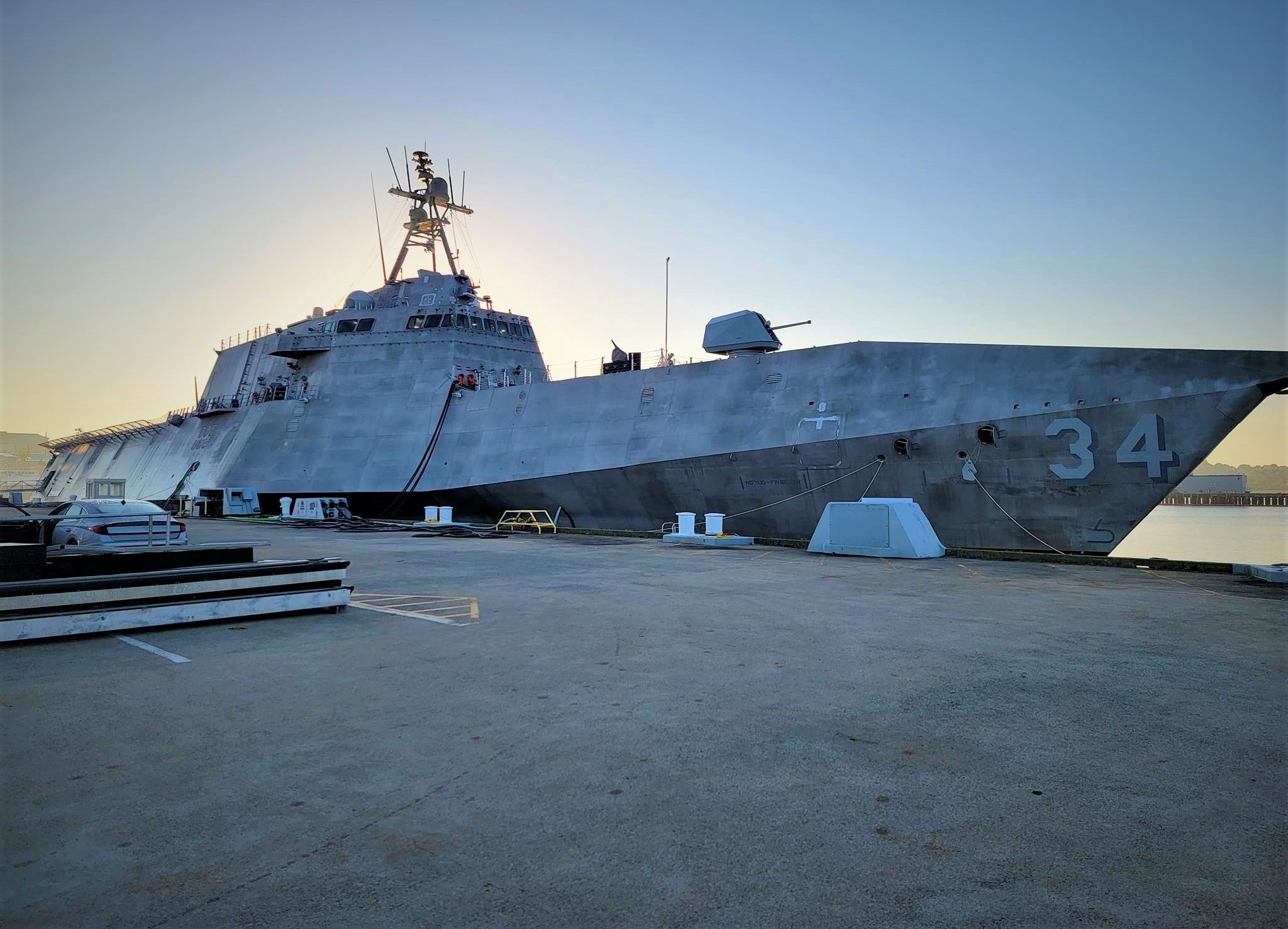The United States Navy recently extended the deployment of the aircraft carrier USS Dwight D. Eisenhower while it patrols the shipping lanes of the Red Sea and Gulf of Aden protecting commercial shipping from Houthi rebel attacks. The Eisenhower left its homeport at Norfolk on October 14, more than 200 days ago.
The Ike’s sailors aren’t the only ones being forced to spend more time away from home. Many of the carrier’s escort vessels have also seen their deployments extended.
The Navy is struggling to meet some of its operational requirements in part because it simply doesn’t have all the ships it expected. The current threat to navigation in the Red Sea is precisely the scenario for which the Navy invested so much time and resources building the Littoral Combat Ships. The LCS program was sold to the American people as a “networked, agile, stealthy surface combatant capable of defeating anti-access and asymmetric threats in the littorals.”
The Houthi rebels launching missiles and drones from shore and hijacking commercial shipping in the confined waters of the Red Sea meets the textbook definition of an asymmetric threat in a littoral region. Yet the “little crappy ships,” as they have come to be known, are nowhere to be seen inside the Red Sea. Rather, the Navy has to keep a carrier strike group composed of Ticonderoga-class guided missile cruisers and Arleigh Burke-class destroyers on station longer than anticipated in an attempt to keep an important maritime choke point open.
The Littoral Combat Ship is one of two major shipbuilding failures from the past 20 years. The other is the Zumwalt-class destroyer. Both programs began in earnest in the years after 9/11 and almost immediately ran into trouble. The Zumwalt program saw massive cost growth which forced Navy leaders to slash the planned fleet size from the originally planned 32 to 7 and finally to the three which were actually built. These three ships cost nearly $8 billion each while failing to deliver promised combat capabilities.
The Littoral Combat Ship program cost $28 billion to build a fleet of 35 ships. According to the Government Accountability Office, the Navy expects to pay more than $60 billion to operate the fleet for its expected 25-year lifespan. Like the Zumwalt, the LCS program’s combat functionality is far less than expected. The ships were designed to be modular with crews swapping out mission systems in port for different missions. Engineers could never get the mission modules to work properly, so the scheme was abandoned.
The LCS program does excel in spectacular breakdowns. The USS Milwaukee famously broke down shortly after it had been commissioned and had to be towed into a Virginia port while its crew attempted to sail the ship to its intended San Diego home for the first time. Other ships suffered from saltwater corrosion, cracked hulls, and broken-down water jets. The Freedom-class variant LCS had trouble with the combining gear linking its diesel engine with the ship’s turbines. The problems grew so bad that Navy leaders essentially threw up their hands and began retiring ships decades before they should have smelled mothballs. The Navy decommissioned the USS Sioux City after a single deployment and less than five years after the ship entered service.
Navy leaders are now scrambling to develop the Constellation-class frigate to fill the capability gap that should have been filled by the Littoral Combat Ship. They decided upon a safer acquisition strategy with the new program by selecting the European multipurpose frigate, a proven design already in service with the French and Italian navies, rather than starting at the drawing board. The Navy awarded Fincantieri Marinette Marine the detail design and construction award for the first ship in April 2020.
Of course, the Navy isn’t simply purchasing a fully developed ship. Engineers began with the existing design and have spent the past several years “maturing” it. Like many such endeavors, changes to one shipboard system necessitated modifications to others and the entire process spiraled. Navy leaders had expected to have the first ship to be delivered in 2026, but they recently announced that because of design problems, supply chain issues, and a shortage of skilled workers will delay the first ship by an additional three years.
The U.S. Navy’s last successful comparable surface shipbuilding program was the Oliver Hazard Perry-class frigate. The final ship of that class, the USS Ingraham, was commissioned in 1989.
Herein lies the danger inherent with unrealistic acquisition programs. When service leaders convince themselves that a radical design will work before the concept is actually demonstrated in the real world, they commit themselves, potentially for decades, to a program that may fail. By spending so much time and money on the Littoral Combat Ship program, the U.S. Navy squandered 40 years of shipbuilding time. That is an enormous lost opportunity cost and now our hard-pressed sailors enduring extended deployments are paying the price.
Service leaders, the civilians leading them, and members of Congress need to remember this case the next time a defense contractor presents them with a bunch of slick conceptual drawings and then fills their ears with promises of transformative capabilities they can deliver at rock-bottom prices. As the homesick sailors aboard the Ike understand well now, if it sounds too good to be true, it definitely is.
- Houthi attacks underscore failures of Biden Red Sea strategy ›
- The cost of US fighting Houthis in the Red Sea just went up ›
- Why US shipbuilding is the worst and more money won't save it | Responsible Statecraft ›
- The US Navy just lit another $9 billion on fire | Responsible Statecraft ›
















